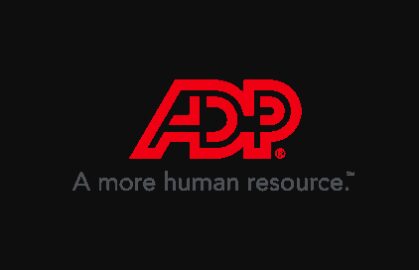Direct Method: Complexities of Cash Flow Method of Accounting

Since these two documents act as inputs for generating cash flow statement, the accrual values have to be converted to cash for calculating cash flow. Unlike the direct approach, the net profit or loss from the Income Statement is adjusted for the effect of non-cash transactions. Such adjustments include eliminating any deferrals or accruals, non-cash expenses (e.g. depreciation and amortization), and any non-operating gains and losses. It can include money received from customers and interest payments, as well as money paid out for employee wages, supplies and tax. A business’ cash flow statement shows the company’s profits and losses within a given time frame. If you own a busy retail store, for example, you have heaps of transactions on any given day.
- The investing and financing sections of the statement of cash flows are prepared in the same way for both the indirect and direct methods.
- However, the more you grow and scale your business, the less feasible it may be to utilize the direct method.
- The information in the Statement of Cash Flows is widely used by internal management, external auditors, potential investors, banks, and other creditors such as vendors and leasing companies.
The cash flow statement is divided into three categories—cash flow from operating, cash flow from financing, and cash flow from investing activities. The cash flow statement can be prepared using either the direct or indirect method. The cash flow from financing and investing activities’ sections will be identical under both the indirect and direct method.
How to Calculate Your Cash Flow
Accounting with the direct cash flow method is ideal for small businesses, partnerships, and sometimes sole proprietors. If you’re a large corporation, however, your financial health isn’t represented accurately with the direct cash flow method. For example, a company using accrual accounting will report sales revenue on the income statement in the current period even if the sale was made on credit and cash has not yet been received from the customer.
Like the direct method, there are both advantages and disadvantages to this method. This can be achieved using indirect method where adjustments are made to convert accrual transactions to cash before calculating cash flow. It is a time-consuming, complex process yet many companies adopt this for the sake of accuracy. The sum of these items gives us the net cash flow from operating activities. The direct method is particularly useful for smaller business that don’t have a lot of fixed assets, as the direct method uses only actual cash income and expenses to calculate total income and losses. The only difference between the Direct Method and the Indirect Method is in how we derive our cash flow from operating activities.

However, it requires detailed and accurate cash transaction data, which may not be readily available for some organizations. Since most companies use accrual accounting, the income statement reveals little about cash flowing into and out of the business. To provide an understanding of cash flows, companies turn to the cash flow statement, which includes a section that restates income on a cash basis.
Comparing the Direct and Indirect Cash Flow Methods
The cash flow statement is the financial statement that describes the cash flow movement happening in the business from one financial period to another financial period. The cash flow statement can be prepared by utilizing two broad methods namely the direct cash flow method and the indirect cash flow method. Under the direct method, the only section of the statement of cash flows that will differ in the presentation is the cash flow from the operations section. The direct method lists the cash receipts and cash payments made during the accounting period. Direct cash flow is the money that flows directly into and out of your business. For example, if you’re a plumber with specific hours for appointments, it would be considered direct cash flow if you invoice someone for a service after completing it.
In the United States GAAP adherence is strictly followed and is required by outside audit agencies prior to receiving their approval. Although the Direct Method is considered by some to be easier to visualize, it tends to be very cumbersome to assemble and time-consuming to validate. Perhaps it is for this reason that the Indirect Method is by far the most widely used in business.
The other option for completing a cash flow statement is the direct method, which lists actual cash inflows and outflows made during the reporting period. The indirect method is more commonly used in practice, especially among larger firms. The direct method is perhaps the simplest to understand, though it’s often more complex adp time and labor time and attendance software for your business to calculate in practice. But there are several ways in which these can be put together, which may give different figures. Understanding the difference between direct and indirect cash flow reporting and which will be better-suited to your business is vital in ensuring your financial reporting is accurate and relevant.
How to Report Prior Period Adjustments in a Cash Flow Statement
This is because the money flowed directly into your account when you completed the job. Direct cash flow factors in cash payments and receipts and does not begin its calculations from a company’s net income. As a result it calculates only what has been received, for a certain period, after outgoings have been deducted, also known as the income statement method.
Shopify Announces Second-Quarter 2023 Financial Results – Shopify
Shopify Announces Second-Quarter 2023 Financial Results.
Posted: Wed, 02 Aug 2023 20:53:05 GMT [source]
Suppose you’re a smaller business simply looking for clarity in your financials. Direct cash flow reporting takes a long time to prepare because most businesses work on an accrual basis. This post will teach you exactly when to use the direct or indirect cash flow method.
Direct Cash Flow Method
The reconciliation report is used to check the accuracy of the operating activities, and it is similar to the indirect report. The reconciliation report begins by listing the net income and adjusting it for non-cash transactions and changes in the balance sheet accounts. You can produce your cash flow statement using the indirect or direct method of cash flows, but there are pros and cons to both methods. The indirect method may be easier for you, as the direct method requires additional account information and takes more time for you to calculate, but finding the right method can help you discover your business’s rhythm. The indirect method, on the other hand, starts off with a statement of net quarterly income and adjusts for expenses and revenues by accounting for credit transactions and items that are not direct cash. The items on an indirect cash flow statement can include depreciation expenses, for example, even though such expenses do not involve actual cash changing hands.
Lightspeed Announces First Quarter 2024 Financial Results – PR Newswire
Lightspeed Announces First Quarter 2024 Financial Results.
Posted: Thu, 03 Aug 2023 11:00:00 GMT [source]
If a customer buys a $500 widget on credit, the sale has been made but the cash has not yet been received. The indirect method is simpler than the direct method to prepare because most companies keep their records on an accrual basis. Larger, more complex firms, on the other hand, may find it too inefficient to devote the necessary resources to the direct method, so the indirect alternative becomes faster and simpler. This option may also be more beneficial for long-term planning, as it gives a wider overview of the firm’s overall cash flow. The direct method is most appropriate for small businesses and proprietorships that don’t have significant cash transactions.
The indirect method is a convenient method used to present a company’s cash flow. However, most companies use the indirect method because of its simplicity. Doing this allows you to adjust accounting figures in the net income statement that do not impact cash flow. Before beginning, you will need to collect the necessary financial information.

The indirect method is more commonly used by businesses, as the statistics used in the indirect method are also used in other financial statements, which makes the method easier to calculate. If you own a busy retail store, for example, you have tons of transactions on any given day. Another disadvantage of the direct method is that if, say, you’re a publicly held corporation, your cash flow statements are publicly available. The indirect method is more commonly used by businesses, as the statistics used in the indirect method are also used in other financial statements, which makes the method easier to calculate. The indirect method uses readily available information and most companies find it easier to employ. The layout of the direct cash flow method makes it easy for the reader to understand how cash comes into and out of the business.
Differences between indirect and direct cash flow accounting methods
The indirect method backs into cash flow by adjusting net profit or net income with changes applied from your non-cash transactions. To perform this calculation, begin with net income, add back non-cash expenses and then adjust for gains and losses on the sale of assets. Next, account for changes in non-cash current assets and changes in your working capital accounts, except for notes payable and dividends payable.
- While both methods will provide you with the same net cash flow calculation, they each come with their own benefits and drawbacks that may make one option better suited for your business.
- Here the values noted inside parentheses are negative, indicating outgoing cash.
- As we discussed earlier, the size of your business can determine if the direct vs indirect cash flow method is better for you.
- Never take your eyes off the cash flow because it’s the lifeblood of business.
You’ll note that the cash flow statement requires reconciling the net income to net cash from operating activities. Because the direct method of cash flow accounting and reporting requires more information and separate accounting records, many businesses default to using the indirect method. However, if you’re a stickler for accurate accounting and want your investors to stay fully informed, the direct method could be the best option. Much like interest, under the IFRS, dividends may be classified as either an operating, investing or financing activity provided the accounting treatment remains consistent treating similar events in the same manner.
In this case, you will need information from the company’s income statement and balance sheet. This information should come from the same period, such as a certain year or quarter. The indirect technique displays the cash flow statement as a function of changes into current assets and liabilities.
